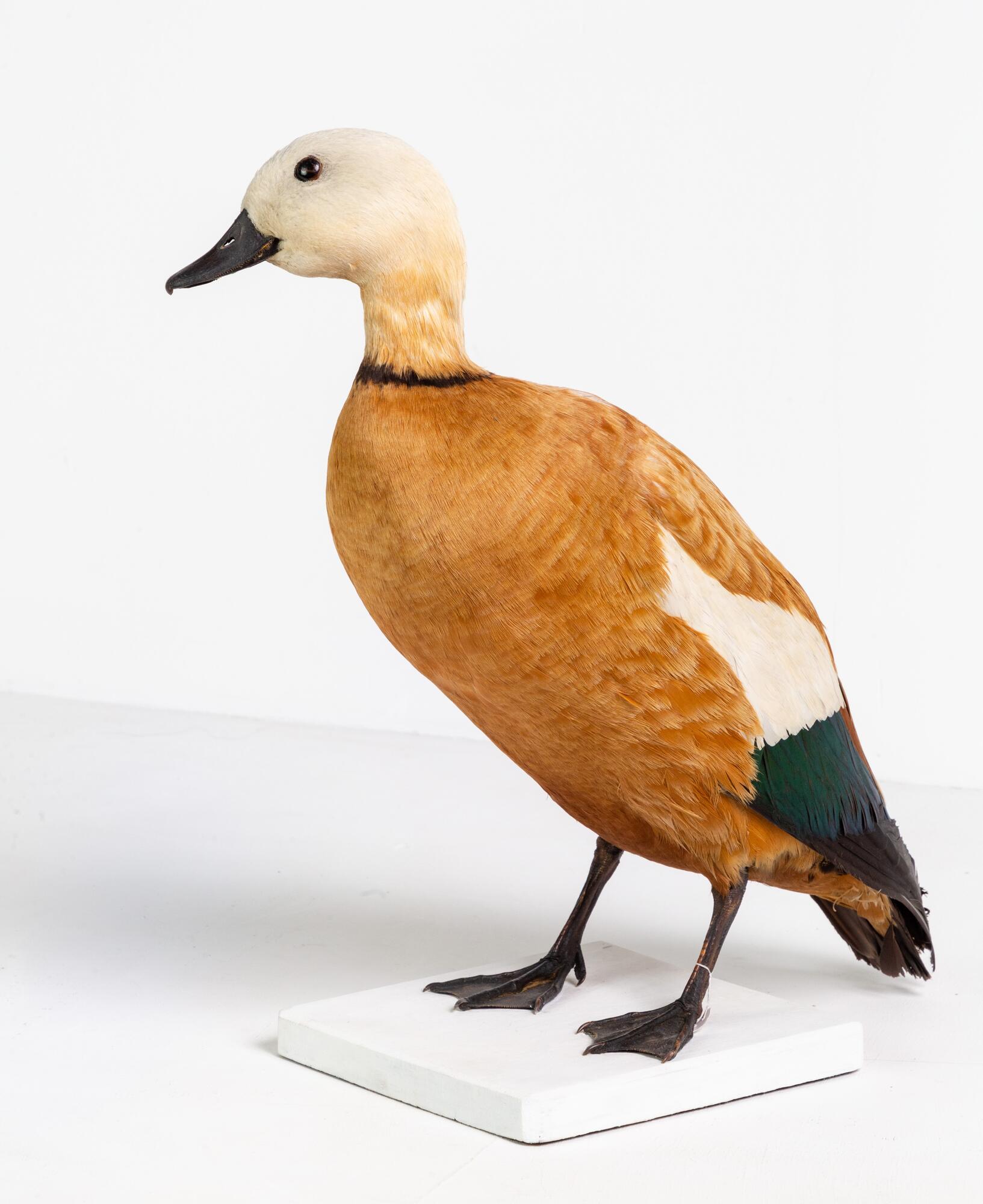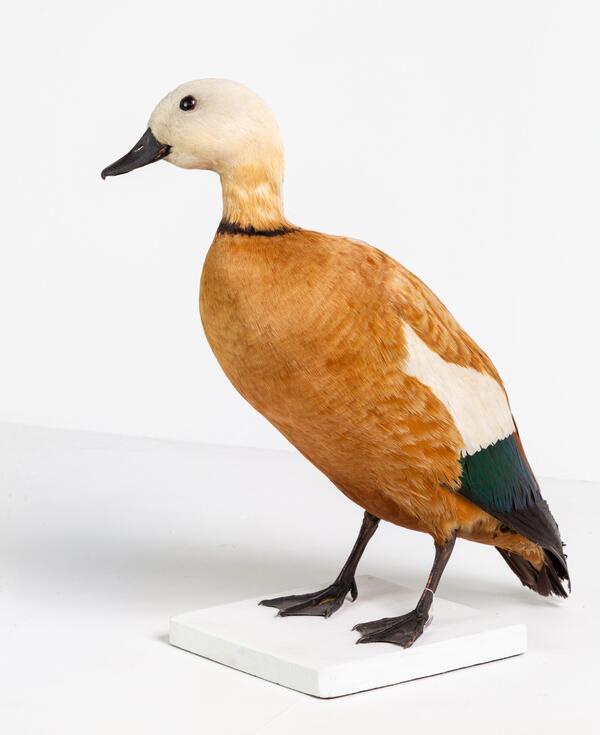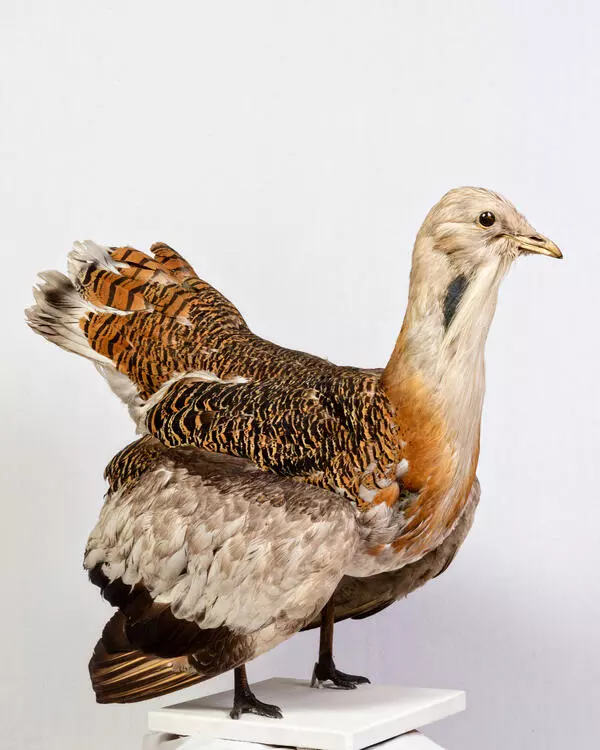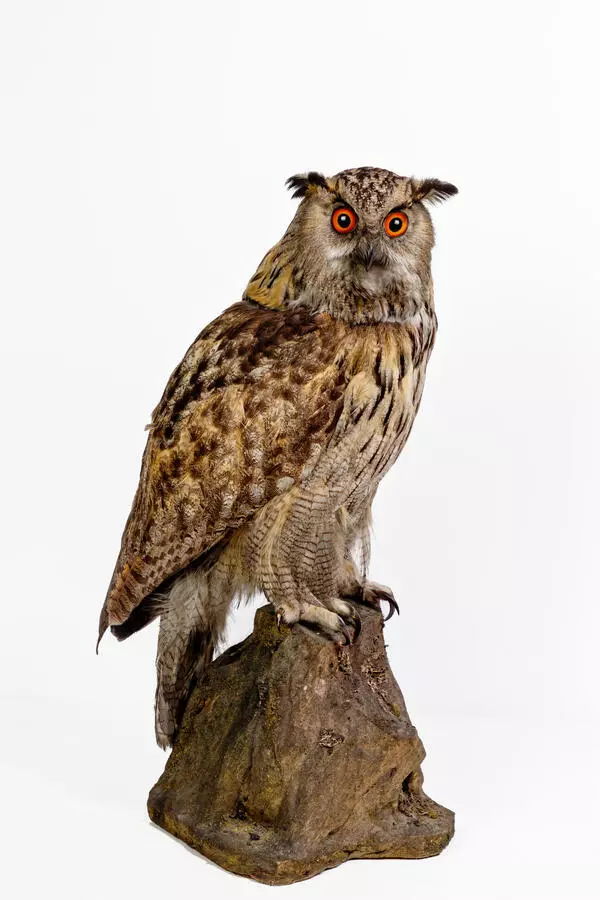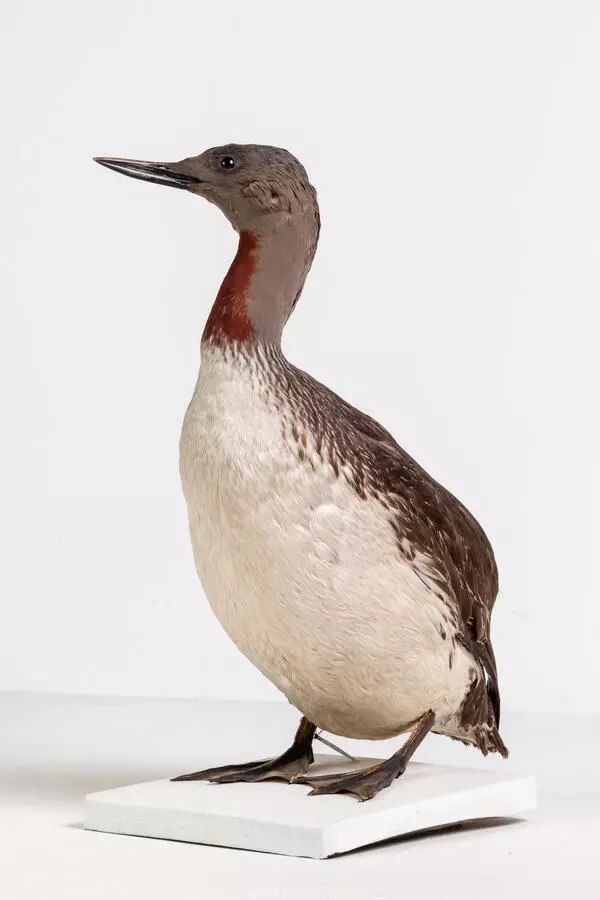The ruddy shelduck is easily recognized by the characteristic bright red color of the plumage. It looks more like a goose than a duck. Its body length is over 60 centimeters, and its body weight is up to 1.5 kilograms. It settles near a variety of reservoirs, but for recreation and nesting, it can choose places far enough from the water. Nests of birds are arranged in burrows of steppe animals, cracks of banks, and hollows of trees.
Ruddy shelduck do not form large flocks, thus preferring to live in pairs or in small groups of 2-4 pairs. The birds are considered monogamous and are able to keep a pair for several years. Moreover, the female chooses the male attracting its attention with screams and peculiar dances with an open beak around the cock duck. The latter can only stand on one leg, thus stretching its neck, lowering its head and dragging the wings, or walking around the female.
In food, this duck is unpretentious. It is able to get food both in water and on land. The basis of its diet is greens, such as grass, shoots, seeds, and cereals. Ducks also eat large grasshoppers, locusts, small fish, frogs, shellfish, and crustaceans. However, in the absence of live food, they do very well with vegetation. In the fields at the end of summer, ducks pick up the grains left after harvesting. In the daytime, birds usually rest in the water or on the banks of reservoirs, and at dawn and in the evening they go out to eat. Ruddy shelduck can often be seen sleeping while standing on one leg and digesting the eaten food.
The bird is characterized by aggressive behavior in reservoirs, thus driving away other ducks, and females arrange squabbles with cock ducks of their own species. The aggressive nature of these birds is especially evident during the breeding season.
Mongol-speaking peoples especially revere the ruddy shelduck. The ancient ban on its hunting is considered indisputable. The bright plumage of the bird resembles the dress of Buddhist monks in color, which is why it is popularly called ‘lam shuvuu’, i.e. ‘lama bird’.
In Western Europe, ruddy shelduck are bred for decorative purposes. But this duck is valued not only for its elegance. Ruddy shelduck grown on a farmstead differs from wild relatives in its weight. It can reach 6 kg in males and up to 4 kg in females. In addition, the feathers and down of ruddy shelduck are of special value.
Ruddy shelduck do not form large flocks, thus preferring to live in pairs or in small groups of 2-4 pairs. The birds are considered monogamous and are able to keep a pair for several years. Moreover, the female chooses the male attracting its attention with screams and peculiar dances with an open beak around the cock duck. The latter can only stand on one leg, thus stretching its neck, lowering its head and dragging the wings, or walking around the female.
In food, this duck is unpretentious. It is able to get food both in water and on land. The basis of its diet is greens, such as grass, shoots, seeds, and cereals. Ducks also eat large grasshoppers, locusts, small fish, frogs, shellfish, and crustaceans. However, in the absence of live food, they do very well with vegetation. In the fields at the end of summer, ducks pick up the grains left after harvesting. In the daytime, birds usually rest in the water or on the banks of reservoirs, and at dawn and in the evening they go out to eat. Ruddy shelduck can often be seen sleeping while standing on one leg and digesting the eaten food.
The bird is characterized by aggressive behavior in reservoirs, thus driving away other ducks, and females arrange squabbles with cock ducks of their own species. The aggressive nature of these birds is especially evident during the breeding season.
Mongol-speaking peoples especially revere the ruddy shelduck. The ancient ban on its hunting is considered indisputable. The bright plumage of the bird resembles the dress of Buddhist monks in color, which is why it is popularly called ‘lam shuvuu’, i.e. ‘lama bird’.
In Western Europe, ruddy shelduck are bred for decorative purposes. But this duck is valued not only for its elegance. Ruddy shelduck grown on a farmstead differs from wild relatives in its weight. It can reach 6 kg in males and up to 4 kg in females. In addition, the feathers and down of ruddy shelduck are of special value.
Duck down stands out by its softness and has excellent thermal insulation qualities. Warm and weightless feathers are used for the production of blankets and winter clothing.
